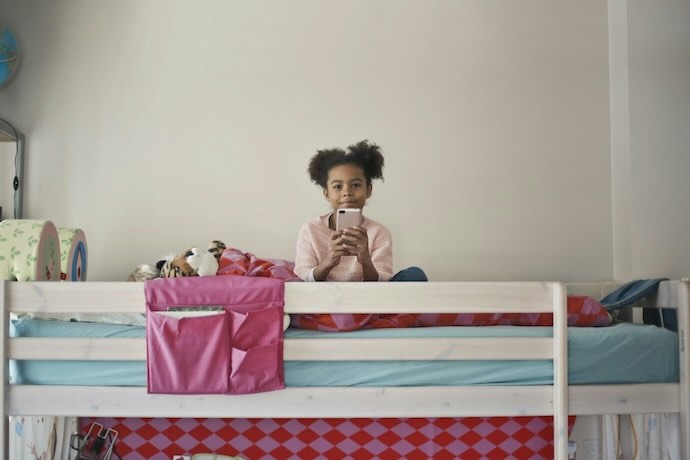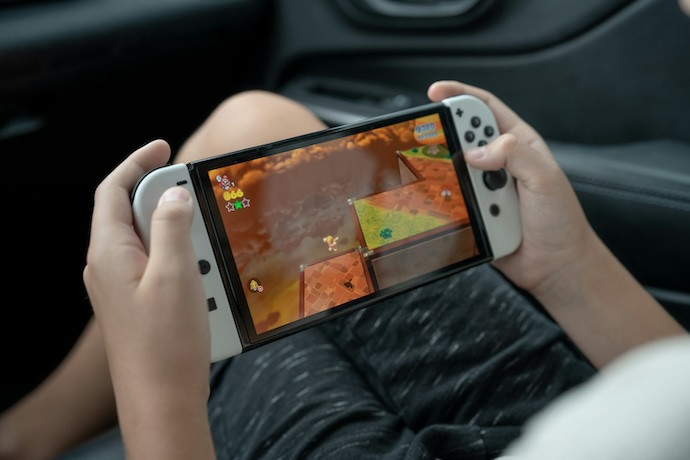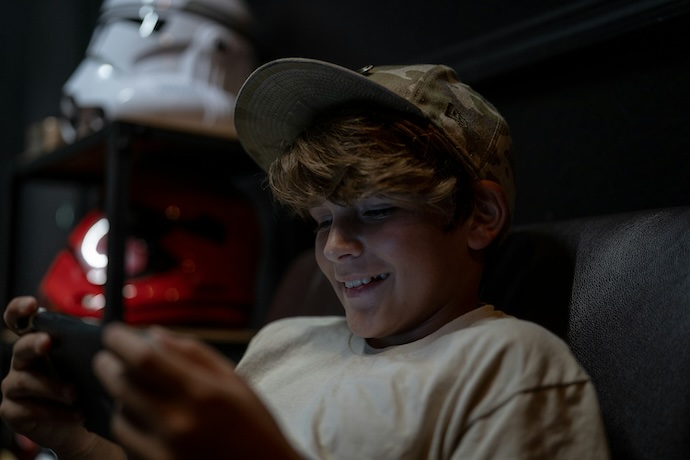Screens are everywhere. And we mean EVERYWHERE. You can't get away from them, and parents especially can feel they need to be even more reliant on these technical marvels.
From smartphones, to tablets and of course the gaming consoles and even the virtual classrooms, kids of today are growing up in a digital world that’s both powerful, overwhelming and sometimes dangerous.
As parents, the challenge isn’t just limiting screen time. It’s learning how to guide it.
So, how much screen time is too much? An all too common question. How can families create a healthy digital use, and find a balanced approach that works in real life?
Thanks to Family Days Out, we have you covered! Keep reading for what you need to know, as well as enjoy helpful, real-world tips to allow you to make tech a positive part of your child’s development, and not let it become a digital babysitter.
Main Photo by Johan Basberg on Unsplash

Photo by bruce mars on Unsplash
Why Screen Time Matters More Than Ever
Did you know that the average child now spends a whopping 4 to 6 hours per day on screens? To make that fact even more scary, that number jumps even higher for teens.
However, not all screen time is created equal. There are some exceptions where technology can make our lives better, such as video calls with the grandparents, which is incredibly valuable. There are also great educational games too. It's the YouTube rabbit holes or endless scrolling where things get tricky.
Studies have shown that too much passive screen time has been linked to:
- Disrupted sleep patterns
- Reduced attention span
- Lower academic performance
- Increased anxiety and irritability
However, when it's used thoughtfully, screen time can also:
- Support learning and creativity
- Encourage global awareness
- Build digital literacy and problem-solving skills
The key is intentional use, and that’s where the parents come in!

Photo by Shashank Verma on Unsplash
5 Tips for Navigating Screen Time with Confidence
1. 📱 Set a Family Media Plan (and stick to it!)
Create a weekly screen time agreement that works for your whole household. Make sure to include daily limits, as well as list out clear content guidelines. It's also a great idea to introduce device-free zones (like during dinner or one hour before bed).
The American Academy of Pediatrics even offers a customizable Family Media Plan tool to help you get started.
2. 🎮 Know What They’re Watching and Playing
It's really important that you don’t just track how much time your kids spend on screens, as parents you need to know what they’re engaging with. Do you know that the content is age-appropriate? Is it educational? Interactive? Make sure you watch or play with your children when possible so you can talk about their content, see how they're consuming it - then you can ask questions, and share insights.
3. 💤 Prioritize Sleep, Movement, and Social Time
Before adding screen time into the daily routine, it's imperative to ensure the basics are covered: Kids need 8+ hours of sleep, as well as active play, face-to-face interaction, and of course homework time. After all of these are ticked, then the screens can come into play.
If screens are cutting into those essentials, it’s time to reevaluate.

4. 🧠 Model Healthy Habits
Kids notice everything. We mean everything. Kids learn by example, so if you are constantly glued to your phone, they will be too! The daily plan you have made for them, needs to be upheld by parents too. Make sure you are part of the device-free dinners, read instead of scrolling for that hour before bed, or turn off notifications during family time. Modeling balance sends the strongest message in navigating screen time for the children.
5. 🛠 Use Tools, Not Just Rules
The great news is that most devices now have built-in screen time tools and parental controls, which can be used to block inappropriate content, set usage limits, as well as monitor app activity without the need for hovering. Apps like Qustodio, Bark, and Google Family Link can be a big help
FAQ: Navigating Screen Time for Kids
Have questions about navigating screen time for kids? We have you covered!
It really depends on their age. The American Academy of Pediatrics recommends no screen time (other than video calls) for kids under 18 months, then increases to up to 1 hour per day for ages 2–5, and consistent limits for older children. The key thing is that you focus more on quality and balance than exact minutes.
Educational shows, as well as creative apps (like drawing or coding), interactive games, and video chats with loved ones are all considered high-quality screen time. It's the passive watching or scrolling for long periods that you want to limit.
Yes! Parents, this goes for you as well. Screens can interfere with your melatonin production, which makes it harder to fall asleep. It's a great idea to stop all screens at least 1 hour before bedtime, and make sure you keep devices out of bedrooms at night.
Video games can be okay for kids! If they are engaging in age-appropriate, non-violent games that encourage problem-solving or creativity, as well as improve hand eye coordination, these of course can be beneficial. Make sure you monitor content and time, and discuss what your child is playing so you can stay involved.
That’s normal! And even more normal if they’re used to unlimited access. Which is why it's so key to impliment these boundaries from an early age. Be consistent, explain your reasons calmly, and always have screen-free alternatives on hand (like board games or outdoor play) that you can offer. Over time, boundaries will feel more routine and peace will resume in the household.
Screen time can be used as a reward or punishment, but use with caution. Using screens as a reward too frequently may make it seem even more desirable. Instead, it's better to build screen time into your daily routine so it’s expected yet limited — and earned through positive behavior.
There are programs out there to help with this, for example, built-in parental tools or apps like Google Family Link. Make sure you also talk regularly about what your children are watching or playing. Ask questions, show interest, and create a culture of open conversation, as opposed to hidden rules. You've got this!
Screen Time by Age: General Guidelines
If you're unsure about what how much screen time your children should be using, here's a look at expert recommendations:
Age Group & Recommended Daily Limit:
0-18 months; Avoid screens (except video calls)
18-24 months; Very limited; co-view only
2-5 years; 1 hour/day of high-quality content
6-12 years; consistent limits (balance matters!)
Teens; No strict limit, but strong boundaries
Remember: quality always matters more than quantity!

Photo by R.D. Smith on Unsplash
Making Screen Time Work for Your Family
Every family is different. We know that! What matters most is staying involved, as well as staying curious, and talking openly about how tech makes your kids feelboth mentally and emotionally, and also physically. When screens become a tool instead of a trap, kids learn to navigate the digital world with confidence, creativity, and control, and can actually be beneficial.
After all, it's just a fact of life now that children can't grow up into this tech world and not understand what it means, or how to use it.
Bonus: Great Screen-Time Alternatives
Need ideas to help your kids unplug? Check out Family Days Out top picks:
- Indoor play spaces near you for rainy days
- STEM museums that fuel real-world curiosity
- Nature-based family attractions for screen-free exploration

Photo by R.D. Smith on Unsplash
Final Thought
Navigating screen time isn’t about fighting tech — it’s about helping your kids build their own healthy relationship with it. Make sure you set clear expectations, don't forget how important it is to lead by example, and ensure that you keep communication open and allow children to feel comfortable coming to you with any questions.
That’s the formula for success in the digital age - good luck! Share any experiences or tips of your own in the comments below!












Lisa Downs
Lisa has been a content writer for Family Days Out for nearly 10 years, and a keen travel writer for nearly 20. She loves experiencing the best of a city, discovering the many things to do and immersing herself in the culture, and sharing these experiences with others through her writing.
Leave a comment